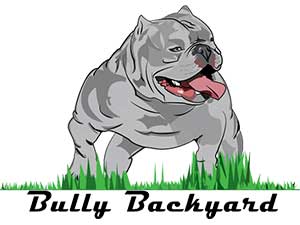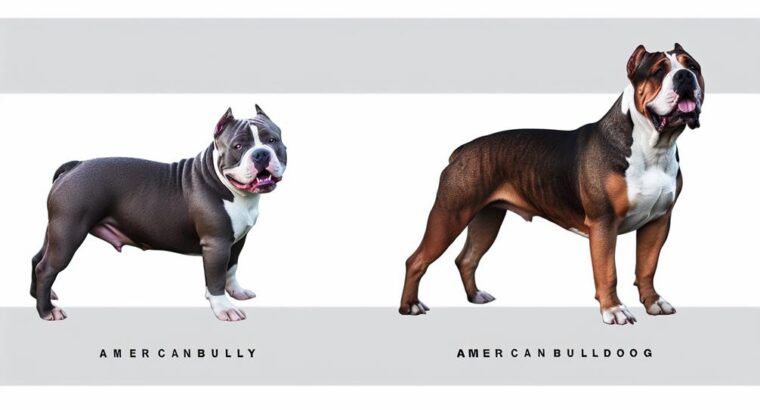American Bully Versus American Bulldog
The distinction between the American Bully and American Bulldog goes beyond their physical appearance, delving into their unique temperament, exercise needs, and health considerations.
While the American Bully exudes a friendly and outgoing demeanor, the American Bulldog carries a more assertive and protective nature.
Understanding these differences is vital for potential owners, as it impacts not only the dynamics within the household but also the care and training required for each breed.
By exploring how these variations influence ownership experience, a deeper appreciation for the nuances between these two breeds emerges, shedding light on which might be the better fit for different lifestyles and preferences.
Breed Origins
The origins of the American Bulldog trace back to the 17th century, where they were utilized for farm tasks and guarding livestock by early American settlers. These dogs evolved over time through selective breeding practices to enhance their working abilities and temperament.
The American Bully, on the other hand, emerged in the 1980s in the United States through crossbreeding various breeds, including American Pit Bull Terriers, Staffordshire Bull Terriers, and other bulldog breeds. Breeders aimed to create a smaller, friendlier version of the American Pit Bull Terrier, leading to the development of the American Bully. This new breed retained the strength and resilience of its ancestors while also incorporating traits that made it more suitable as a companion animal, reflecting the changing needs and preferences of modern society.
Physical Characteristics
With distinct physical attributes distinguishing them, the American Bulldog and American Bully showcase notable differences in their appearance. American Bulldogs are known for their larger size and heavier build, standing at an average height of 20-28 inches and weighing between 60-120 pounds. In contrast, American Bullies are medium-sized dogs, typically measuring 13-21 inches in height and weighing 70-120 pounds.
The American Bulldog boasts an imposing and stocky build, while the American Bully exhibits a more muscular and compact physique. Facial features also set the two breeds apart, with American Bulldogs having a wider skull, almond-shaped eyes, and a more traditional bulldog appearance. On the other hand, American Bullies have broader heads, shorter muzzles, and small, downturned eyes that contribute to their unique look.
When it comes to coat colors, American Bulldogs come in variations of white, brindle, and fawn, while American Bullies sport short, glossy coats in an array of colors and patterns. These physical disparities make each breed easily distinguishable to those familiar with their characteristics.
Temperament Variations
Discussing the behavioral differences between American Bulldogs and American Bullies reveals distinct temperament variations that set these two breeds apart. American Bulldogs are known for their protective nature and loyalty towards their family members. Their strong guarding instincts make them excellent watchdogs, but they may exhibit aggression towards strangers if not properly socialized.
In contrast, American Bullies are characterized by their friendly, outgoing, and sociable temperament. They are gentle and affectionate companions, often excelling as therapy dogs due to their loving nature.
One key difference lies in the need for socialization. American Bulldogs require early and consistent socialization to make sure they are comfortable around unfamiliar people. Additionally, they need clear boundaries and strong leadership to manage their protective instincts effectively.
On the other hand, American Bullies are more naturally sociable and may not exhibit the same level of aggression towards strangers. Understanding these temperament variations is important for individuals considering either the American Bulldog or American Bully breed.
Exercise and Activity Levels
Are the exercise and activity requirements significantly different between American Bulldogs and American Bullies?
American Bulldogs have high exercise needs, requiring at least 60 minutes of vigorous activity daily to stay healthy and prevent behavioral issues. On the other hand, American Bullies have moderate exercise requirements, typically needing around 30-45 minutes of physical activity each day to maintain their well-being. Both breeds benefit from engaging in activities like walks, runs, hikes, and interactive play sessions to stimulate their minds and bodies.
American Bulldogs thrive on tasks that challenge them physically and mentally, such as agility training, which can help keep them in best shape. In contrast, American Bullies enjoy interactive games and social outings that keep them mentally sharp and physically active. Regular exercise is important for both breeds to prevent obesity, maintain muscle tone, and promote overall health and well-being. By providing adequate physical activity, owners can make sure that their American Bulldogs and American Bullies lead happy and healthy lives.
Grooming Requirements
Moving from the discussion on exercise and activity levels, understanding the grooming requirements for American Bulldogs and American Bullies is essential to guaranteeing their overall well-being and maintaining their physical health.
American Bullies have low grooming needs due to their short, smooth coats that require minimal maintenance. Their short and smooth coats benefit from regular brushing to remove loose hair and keep their coats healthy and shiny.
On the other hand, American Bulldogs have moderate grooming needs with their short, dense coats. These coats benefit from weekly brushing to control shedding and maintain their overall health. Both breeds require regular baths every 1-2 months to keep them clean and odor-free.
Additionally, checking their ears, teeth, and nails regularly is vital for both American Bullies and American Bulldogs to maintain their overall grooming and health. By incorporating these grooming practices into their routine, owners can make sure that their furry companions stay healthy and happy.
Health Concerns
Health concerns are a significant aspect to take into account when caring for American Bullies and American Bulldogs. Both breeds are prone to specific medical issues that require attention and proactive management. American Bullies commonly face health issues such as hip dysplasia, heart valve disease, and skin allergies. On the other hand, American Bulldogs are more susceptible to conditions like hip dysplasia, elbow dysplasia, and eye problems such as cherry eye.
To guarantee the well-being of these breeds, regular vet check-ups are essential. Monitoring weight, dental care, and addressing joint problems are critical aspects of caring for the health of both American Bulldogs and American Bullies. Proper nutrition plays a crucial role in maintaining their overall health and preventing obesity, which can be a significant health risk for American Bulldogs.
Training Needs
When considering the training needs of both American Bullies and American Bulldogs, early obedience training and socialization are essential components for fostering good behavior.
Both breeds are intelligent and have an enthusiasm to please, making them receptive to training. Training classes can be beneficial for enhancing their socialization skills and obedience. Consistency and patience are key when training these breeds to make sure successful outcomes.
By providing proper training, American Bullies and American Bulldogs can learn to interact well with guests, children, and other animals, preventing potential behavioral issues. Training plays an important role in shaping these breeds into well-rounded and well-behaved companions.
It is important to start training early and maintain a structured routine to help them understand boundaries and expectations. With the right approach, both American Bullies and American Bulldogs can thrive and showcase their excellent behavior.
Lifespan and Longevity
In considering the lifespan and longevity of American Bullies and American Bulldogs, it is remarkable that American Bulldogs typically have a longer lifespan, averaging between 14 to 16 years, in comparison to American Bullies whose lifespan ranges from 8 to 12 years on average. The disparity in lifespan can be attributed to various factors, including health issues that are more prevalent in American Bullies. American Bulldogs generally lead longer lives due to their robust constitution and fewer inherent health problems.
To guarantee the longevity of both breeds, proper care is essential. This includes providing a balanced diet tailored to their specific nutritional needs, regular exercise to maintain a healthy weight, and scheduling routine vet check-ups to address any health concerns promptly. Individual health also plays a significant role in determining the lifespan of American Bullies and American Bulldogs. By prioritizing their well-being through attentive care and preventive measures, pet owners can help extend the lifespan of these beloved canine companions.
Cost of Ownership
Considering the financial aspects of responsible pet ownership, understanding the cost implications of caring for an American Bully or American Bulldog is paramount to ensuring their overall well-being and quality of life.
The average cost of owning an American Bully ranges from $1,000 to $3,000, encompassing expenses such as the initial purchase price, vaccinations, and supplies. On the other hand, American Bulldogs typically cost between $800 to $2,000 upfront, with additional financial commitments for training, grooming, and medical care.
Annual expenses for an American Bully can total $1,000 to $2,500, covering essentials like food, toys, vet visits, and potential health issues. Similarly, American Bulldogs may incur yearly costs of $500 to $1,500, factoring in expenditures for food, grooming, insurance, and unforeseen medical expenses.
Both breeds necessitate budgeting for regular expenses like training, grooming, and healthcare to guarantee their well-being and contentment. It is imperative for prospective owners to be prepared for the financial responsibilities that come with owning either an American Bully or an American Bulldog to provide them with a happy and healthy life.
Conclusion
To summarize, the American Bully and American Bulldog are two distinct breeds with unique origins, physical characteristics, temperaments, exercise needs, grooming requirements, health concerns, training needs, and lifespans.
It is important for potential owners to carefully consider these differences before choosing which breed is the best fit for their lifestyle and household. Both breeds have their own set of qualities and challenges, so it is critical to do thorough research and make an informed decision.

